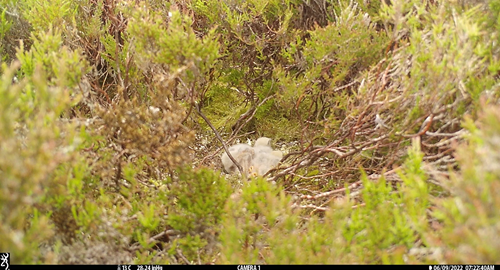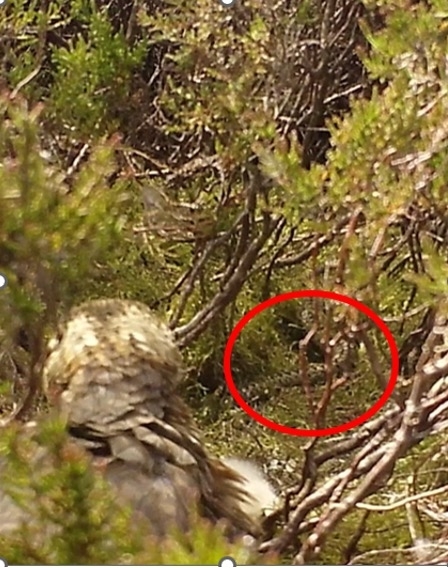By Phil Warren
We have used trail cameras to provide a unique insight into the nesting behaviour of this elusive and secretive bird, which nests on heather moorland in northern England.
Merlin nests were visited under disturbance licence to measure hatching success, ring chicks, and determine how many fledged. During these routine visits, we installed trail cameras at four suitable nests to observe the birds. Cameras were disguised with heather and positioned 1.5m away to give a good view of the nest.
The cameras helped us to collect information on the frequency of food provisions to nestlings and the kind of diet they were fed. The following three images illustrate females feeding chicks that were four, seven, and 21 days old. Footage was collected over six consecutive days from two nests and for only one and two days respectively at the others. In these latter cases chicks wandered from the original nest scrape and so were not filmed for as long a period. The footage we collected encompassed 91 prey delivery events, with meadow pipits being the main prey fed to chicks. Prey was delivered six times per day on average, up to a maximum of 11 times a day.

Female merlin feeding four-day-old chicks.

Female merlin feeding seven-day-old chicks.

Female merlin feeding 21-day-old chicks with a meadow pipit.
The cameras also provided us with information on the fate of nests. All four nests successfully fledged young, but at one nest a chick was predated by an adder, as seen in the image below.

Nest camera footage will continue to be processed this winter to measure dietary composition and help us learn more. To see footage and images from our trail cameras, visit the nest camera section of the Merlin Magic webpage.
The Merlin Magic Project is funded by the government's Green Recovery Challenge Fund. The fund was developed by Defra and its arm's-length bodies. It is being delivered by the National Lottery Heritage Fund in partnership with Natural England, the Environment Agency and Forestry Commission.
